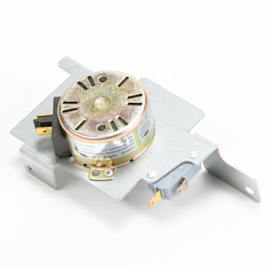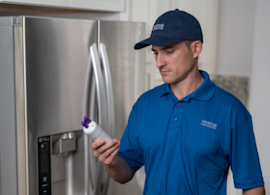
This step-by-step repair guide shows how to replace the oven temperature sensor. The sensor measures the oven temperature and sends that data to the oven control board, which maintains the set oven temperature. If the temperature sensor malfunctions, the oven becomes too hot or won't get hot enough. If the temperature sensor fails completely, the control panel on the range displays an error code. Replace the oven temperature sensor using a manufacturer-approved electric range part.
Use this procedure to replace the oven temperature sensor in many Kenmore, Frigidaire, Whirlpool, KitchenAid, Maytag, Amana, Electrolux, GE, LG and Samsung ranges.






